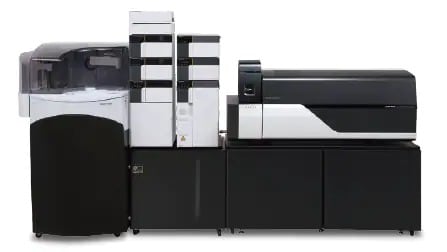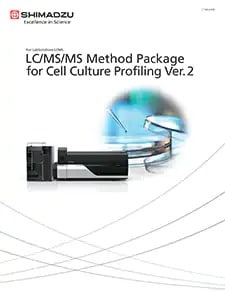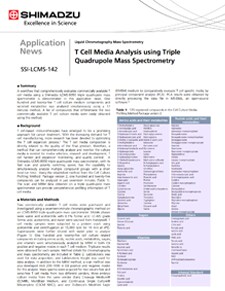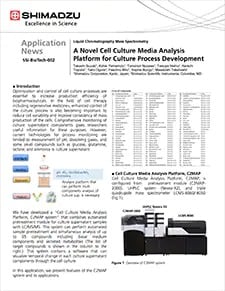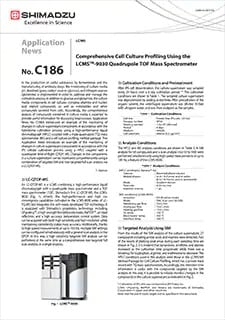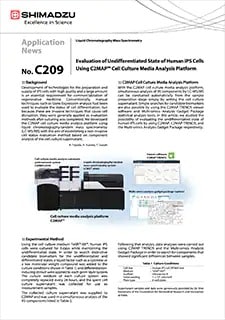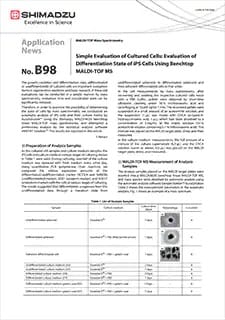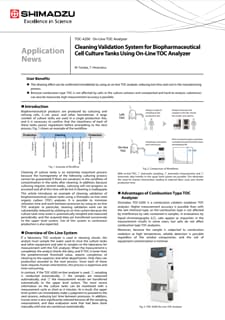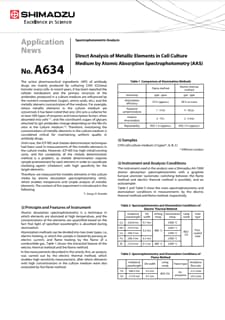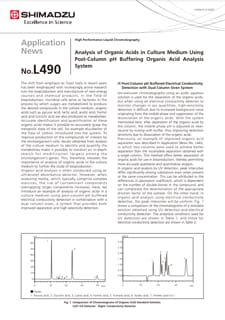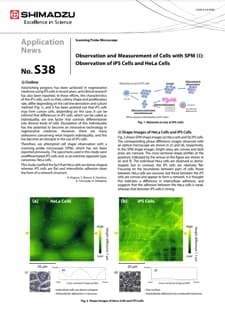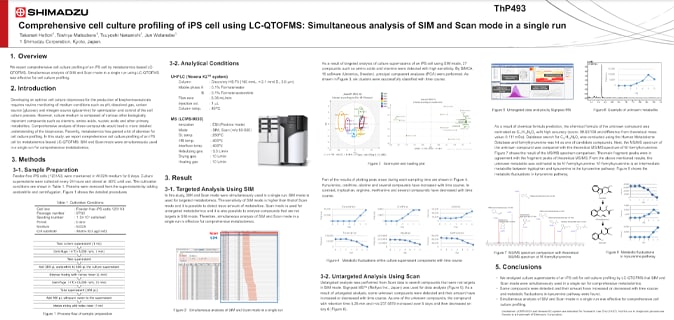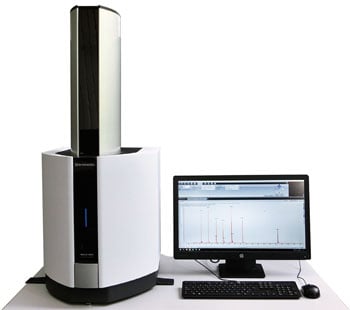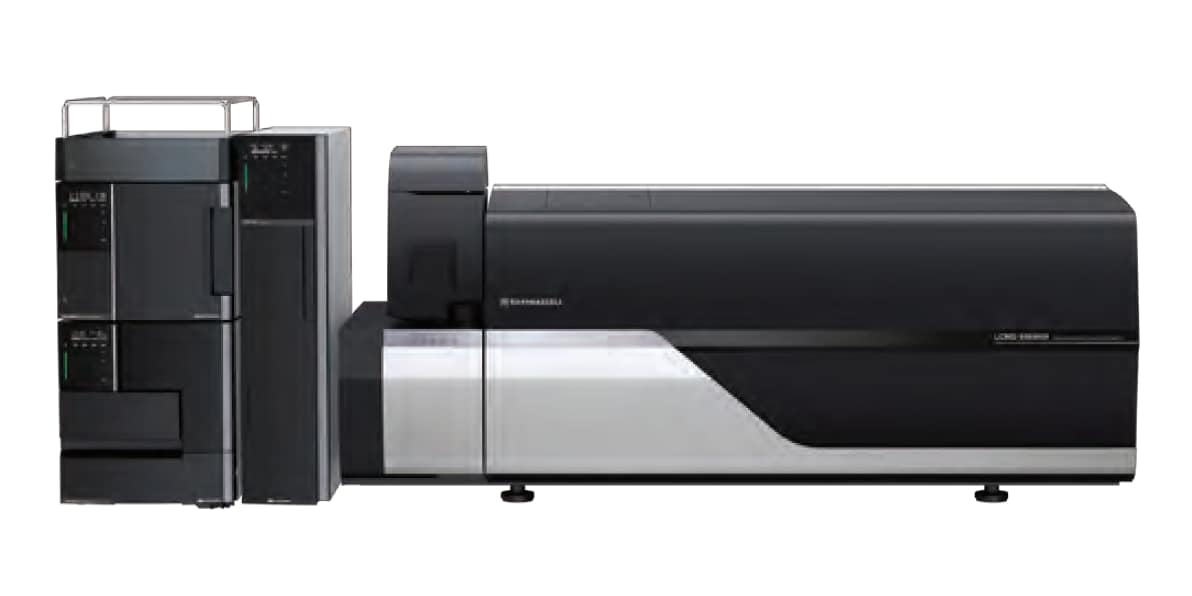Request More Information
Bioprocess and Cell Culture
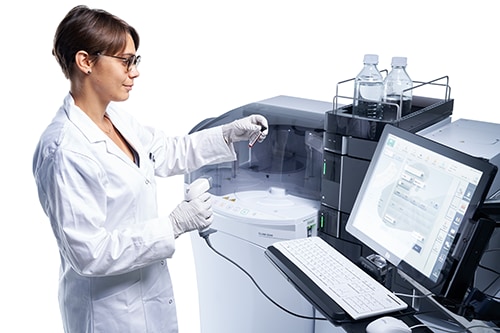
Optimization and control of cell culture processes are essential to increase production efficiency of biopharmaceuticals. In the field of cell therapy including regenerative medicines, enhanced control of the culture process is also becoming important to reduce cell variability and improve consistency of mass production of the cells. Comprehensive monitoring of culture supernatant components gives researchers useful information for these purposes. However, process monitoring is often limited to measurement of pH, dissolved gases, and some small compounds such as glucose, glutamine, lactate, and ammonia in culture supernatant. By harnessing the power of LC-MS/MS analysis, the list of metabolites and basal medium components expands to over 100 relevant compounds that provide a more complete picture of cell culture health. With the use of our cell culture media analysis platform, you now have the capability to monitor different types of cells including pluripotent stem cells (iPS and ES), mesenchymal stem cells, antibody-producing cells. Adding powerful visualization tools allows a time domain view of changes to the culture that gives you the information to adjust media conditions to maintain optimal production.
When scaling up new cell lines for production of an expressed product, LCMS-Q-TOF and MALDI-TOF mass spectrometry solutions can provide invaluable data to identify metabolites and waste products that could interfere with efficient production. Whether your goals are identifying cell differentiation states or routine monitoring of an established bioprocess, Shimadzu has innovative solutions to meet your needs.
Featured Solutions
C2MAP - Cell Culture Media Analysis Platform
The C2MAP™ system measures component changes in a culture supernatant as culturing progresses using LC/MS/MS. This system can be used for a wide range of applications, from basic research of cell cultures including pluripotent stem cells (iPS cells and ES cells), mesenchymal stem cells, and antibody-producing cells, to scaling up of culture volumes and actual process development.
LC/MS/MS Method Package for Cell Culture Profiling Ver.2
This Method Package enables the analysis of 125 compounds in under 20 minutes per sample. Performing analysis separately for each compound group such as amino acids and vitamins makes profiling of cell culture components very laborious, but with this method package a large number of culture medium components and secreted metabolites can be analyzed simultaneously. Compared to the previous version, several metabolites derived from amino acids, nucleic acids and the TCA cycle have been added, allowing even more comprehensive profiling information to be gathered.
Featured Applications
T Cell Media Analysis using Triple Quadrupole Mass Spectrometry
A workflow that comprehensively evaluates commercially available T cell media using a Shimadzu LCMS-8050 triple quadrupole mass spectrometer is demonstrated in this application news. One hundred and twenty-five T cell culture medium components and secreted metabolites was analyzed simultaneously using a 17 minutes method. A list of compounds that differentiate the two commercially available T cell culture media were easily obtained using this method.
A Novel Cell Culture Media Analysis Platform for Culture Process Development
Optimization and control of cell culture processes are essential to increase production efficiency of biopharmaceuticals. In the field of cell therapy including regenerative medicines, enhanced control of the culture process is also becoming important to reduce cell variability and improve consistency of mass production of the cells. Comprehensive monitoring of culture supernatant tcomponents gives researchers useful information for these purposes. However, current technologies for process monitoring are limited to measurement of pH, dissolving gases, and some small compounds such as glucose, glutamine, lactate, and ammonia in culture supernatant.
Comprehensive Cell Culture Profiling Using the LCMS-9030 Quadrupole TOF Mass Spectrometer
Application News No. C106A introduced an example of the monitoring of changes in culture supernatant components in accordance with the hybridoma cultivation process, using a high-performance liquid chromatograph (HPLC) coupled with a triple quadrupole (TQ) mass spectrometer (MS) and a cell culture profiling method package. This Application News introduces an example of the monitoring of changes in culture supernatant components in accordance with the iPS cellular cultivation process using a HPLC coupled with a quadrupole time-of-flight (Q-TOF) MS. Changes in the components in a culture supernatant can be monitored comprehensively using a combination of targeted SIM and non-targeted full scan analysis via a LC-Q-TOF-MS.
Evaluation of Undifferentiated State of Human iPS Cells Using C2MAP™ Cell Culture Media Analysis Platform
Development of technologies for the preparation and supply of iPS cells with high quality and a large amount is an essential requirement for commercialization of regenerative medicine. Conventionally, manual techniques such as Gene Expression analysis had been used to evaluate the status of cell differentiation, but because these are invasive techniques that cause cell disruption, they were generally applied as evaluation methods after culturing was completed. We developed the C2MAP cell culture media analysis platform using liquid chromatography-tandem mass spectrometry (LC-MS/MS) with the aim of establishing a non-invasive cell status evaluation method based on component analysis of the cell culture supernatant.
Simple Evaluation of Cultured Cells: Evaluation of Differentiation State of iPS Cells Using Benchtop MALDI-TOF MS
The growth condition and differentiation state (differentiated or undifferentiated) of cultured cells are important evaluation items in regenerative medicine and basic research. If these cell evaluations can be conducted in a simple manner by mass spectrometry, evaluation time and complicated work can be significantly reduced. Therefore, in order to examine the possibility of determining the state of cells by mass spectrometry, we conducted an automatic analysis of iPS cells and their culture media by AuraSolution™ using the Shimadzu MALDI-8020 benchtop linear MALDI-TOF mass spectrometer, and attempted a preliminary analysis by the statistical analysis software eMSTAT Solution™. The results are reported in this article.
Cleaning Validation System for Biopharmaceutical Cell Culture Tanks Using On-Line TOC Analyzer
This article introduces an example of cleaning validation of biopharmaceutical culture tanks using a Shimadzu on-line total organic carbon (TOC) analyzer. It is possible to minimize retention time and work between processes by using an on-line TOC analyzer. In particular, cleaning validation work can be substantially reduced by utilizing an on-line system because the culture tank rinse water is automatically sampled and measured periodically, and the acquired data are transferred successively to the upper level system. Use of this system in continuous production is also expected.
Direct Analysis of Metallic Elements in Cell Culture Medium by Atomic Absorption Spectrophotometry (AAS)
Until now, the ICP-MS and chelate determination techniques had been used in measurements of the metallic elements in the culture media. However, ICP-MS has high initial/running costs, and the complexity of the chelate determination method is a problem, as chelate determination requires sample pretreatment for each element in order to coordinate chelating agents (chelators) with high specificity for the target elements. Therefore, we measured the metallic elements in the culture media by atomic absorption spectrophotometry (AAS), which enables inexpensive and simple analysis of metallic elements. The content of this experiment is introduced in the following.
Analysis of Organic Acids in Culture Medium Using Post-Column pH Buffering Organic Acid Analysis System
This article introduces an example of cleaning validation of biopharmaceutical culture tanks using a Shimadzu on-line total organic carbon (TOC) analyzer. It is possible to minimize retention time and work between processes by using an on-line TOC analyzer. In particular, cleaning validation work can be substantially reduced by utilizing an on-line system because the culture tank rinse water is automatically sampled and measured periodically, and the acquired data are transferred successively to the upper level system. Use of this system in continuous production is also expected.
Observation and Measurement of Cells with SPM (I): Observation of iPS Cells and HeLa Cells
This article introduces an example of cleaning validation of biopharmaceutical culture tanks using a Shimadzu on-line total organic carbon (TOC) analyzer. It is possible to minimize retention time and work between processes by using an on-line TOC analyzer. In particular, cleaning validation work can be substantially reduced by utilizing an on-line system because the culture tank rinse water is automatically sampled and measured periodically, and the acquired data are transferred successively to the upper level system. Use of this system in continuous production is also expected.
Comprehensive cell culture profiling of iPS cell using LC-QTOFMS: Simultaneous analysis of SIM and Scan mode in a single run
Developing an optimal cell culture bioprocess for the production of biopharmaceuticals requires routine monitoring of medium conditions such as pH, dissolved gas, carbon source (glucose) and nitrogen source (glutamine) for optimization and control of the cell culture process. However, culture medium is composed of various other biologically important compounds such as vitamins, amino acids, nucleic acids and other primary metabolites. Comprehensive analysis of these compounds would lead to more detailed understanding of the bioprocess. Recently, metabolomics has gained a lot of attention for cell culture profiling. In this study, we report comprehensive cell culture profiling of an iPS cell by metabolomics based LC-QTOFMS. SIM and Scan mode were simultaneously used in a single run for comprehensive metabolomics.
News / Events
-
AAPS Pharm Sci 360 2025
November 9-12
Henry B. Gonzalez Convention Center
San Antonio, TX -
Pharma Community Network Event
Shimadzu Scientific Instruments and ZefSci invite you and your analytical teams to a pharma community networking event to celebrate 150 years of science and innovation at The Foundry & Lux in South San Francisco. Our event will be built around innovation, collaboration, and connection.
-
ASMS (American Society for Mass Spectrometry) 2025
June 1-5
Baltimore Convention Center
Baltimore, MD -
Shimadzu Scientific Instruments Opens Boston Location of Its R&D Center Focus will be on promoting customer-oriented development to expand business in the pharmaceutical field
Shimadzu Scientific Instruments, Inc. (SSI, Columbia, Maryland, USA), a Shimadzu Group company, has opened a satellite lab in Boston, Massachusetts to be the base of its collaborative research and development activities on the East Coast. Established to conduct research and development more closely linked to customers, SSI's R&D Center consists of three bases, with the main facilities at its Maryland headquarters, a West Coast location, and this new space in Boston near the city center. The Boston lab was set up by partnering with Labshares, a shared laboratory service provider for life science companies.



